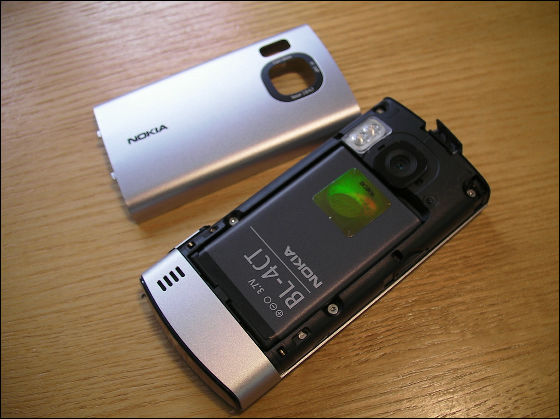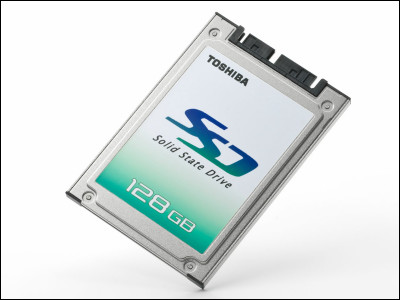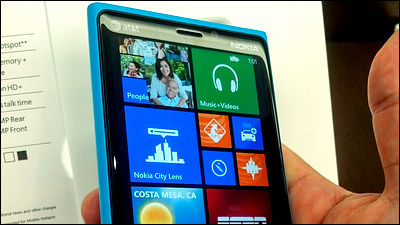Combining parts freely What is the problem of "Project Ara" from Motorola that can be customized to your favorite smartphone?

Motorola, Google's affiliate,Project AraWe advocated a project called. This project is to make each part of the smartphone detachable, so that the terminal can be customized to the preference of each user. This project will be able to customize the terminal more freely to your preference, because the capacity of the smartphone is insufficient because it increases the storage, change the battery soon because the battery decreases quickly, but this project is Jacob MillerMy own blogI point out the problem in.
Dscout + Project Ara · dscout
http://www.dscout.com/ara
Mac Pros, Ara, and Modularity
http://jjcm.org/blog/mac_pros_and_modularity/
◆ Project Ara
Project Ara is an open platform that allows users to freely select parts and complete smartphones. There are multiple parts that make up the smartphone, but these parts can be detachedmoduleBy attaching it to the frame part called "endoskeleton (endoskeleton)", users can assemble their favorite terminals, change the parts later or replace the camera with a high-performance one It is also possible to add functional modules that were not found in previous smartphones.

◆ Current smartphone
On the contrary, the existing products can be said to be products made with the opposite concept. For example, if you want to purchase the latest iPhone, you can select only the color other than the color of 16GB, 32GB, 64GB of iPhone 5s, or 16GB 32GB of capacity of iPhone 5c.

Even terminals other than smartphones can select the display size, processor, memory, storage before purchase, but only a small part of desktop PCs can flexibly expand the functions of the terminal as needed after purchase Of things.

On some desktop computers, it is not only to replace the CPU, replace HDD with SSD, add memory, but also add video card, add optical drive and cooling device, freely add parts And can be replaced. However, as the personal computer becomes a portable computer that can be carried around by a personal computer, their extensibility has gradually been lost. By adding this extensibility to the smartphone,Project Ara's objective is to lower the barriers to entering the hardware development business of smartphones and accelerate innovationIt looks like.
◆ Problems of Project Ara
Of course, there is also a problem with the approach of modularizing Project Ara-like parts and rearranging them. For example, to connect each module part to each other, extra cubic millimeter connection terminal space is required. If we make it smaller, we will consume more battery instead. Although it is a mobile terminal that has evolved to work smaller and more efficiently over time, the battery has not evolved in line with this trend, and the battery sized buttons operate for smartphones for many days It will not be long before to see.

ByRafe Blandford
Furthermore, there is a limit in terms of energy efficiency. Processors are scheduled more efficiently, the circuit has a smaller and energy efficient structure, and wireless communication has become possible to operate at lower power frequency, but the display does not have to convert current to light efficiently , It is apparently a part with much power consumption compared with other parts. The display needs to emit a sufficient amount of light towards the pupil from a distance away from 0.5 meters or more (the distance from the display to the pupil when using a smartphone normally), and this basic principle will change in smartphone displays there is no. The display is the display that occupies the largest proportion of the power consumption of modern smartphones, and for the time being, the power requirement of this will not drop significantly. So, Miller predicts that the battery of the Project Ara terminal will remain at a certain size.

ByJoseph Morris
If you look at the printed circuit board of modern smartphone, you can see why modularization of parts is easy. On the iPhone 5s PCB, the processor - 1 GB memory - and 16 - 64 GB of storage are deployed, but none are quite compact size.

On the other hand, for terminals made under the concept of Project Ara, it is considered that each module slot and equipped module parts will be larger than iPhone etc.

This is the camera parts of the iPhone 5, 5s, 5c from the left. It is quite compact size than the prototype of Project Ara. The module parts to separate are useful for customizing the terminal, but at the price it may not be compact.

◆ Data Transfer
ISAThe AT bus introduced by IBM in 1981. It was widely adopted as a part connecting the motherboard and the expansion card, but lacked speed and adaptability.

EISAIs the next 32-bit computer bus architecture that appeared, but immediatelyPCIIt will be replaced. Although the 32-bit PCI expansion slot was ten times faster than the 16-bit ISA, it was later equipped with a DIME function that allows the main memory to be read and written directly by the graphic controller without involving the CPUAGPAppears.

And as a successor to PCI and AGPPCI ExpressHas appeared, the speed of this is about 3000 times that of ISA.

Although it is technically possible to make these data transmission standards smaller, the lane size of PCI and PCI Express is 1 mm, and the processor whose product was officially announced on April 24, 2012 The lane size of Intel Core i 7 (Ivy Bridge) is 22 nm (nanometer). Even if the lane size becomes 22 nm or less, there is a limit to the amount of data that passes through individual lanes, and in order to be able to process data between modules faster, it is necessary to increase the number of lanes. Also, if you configure a terminal in a module form, the size of the connection terminal that connects each module will be limited.
Although it is an attractive concept of Project Ara, is it possible to produce compact size sense module parts while satisfying the multiple elements listed up to this point ...?
Related Posts:
in Hardware, Smartphone, Posted by logu_ii







